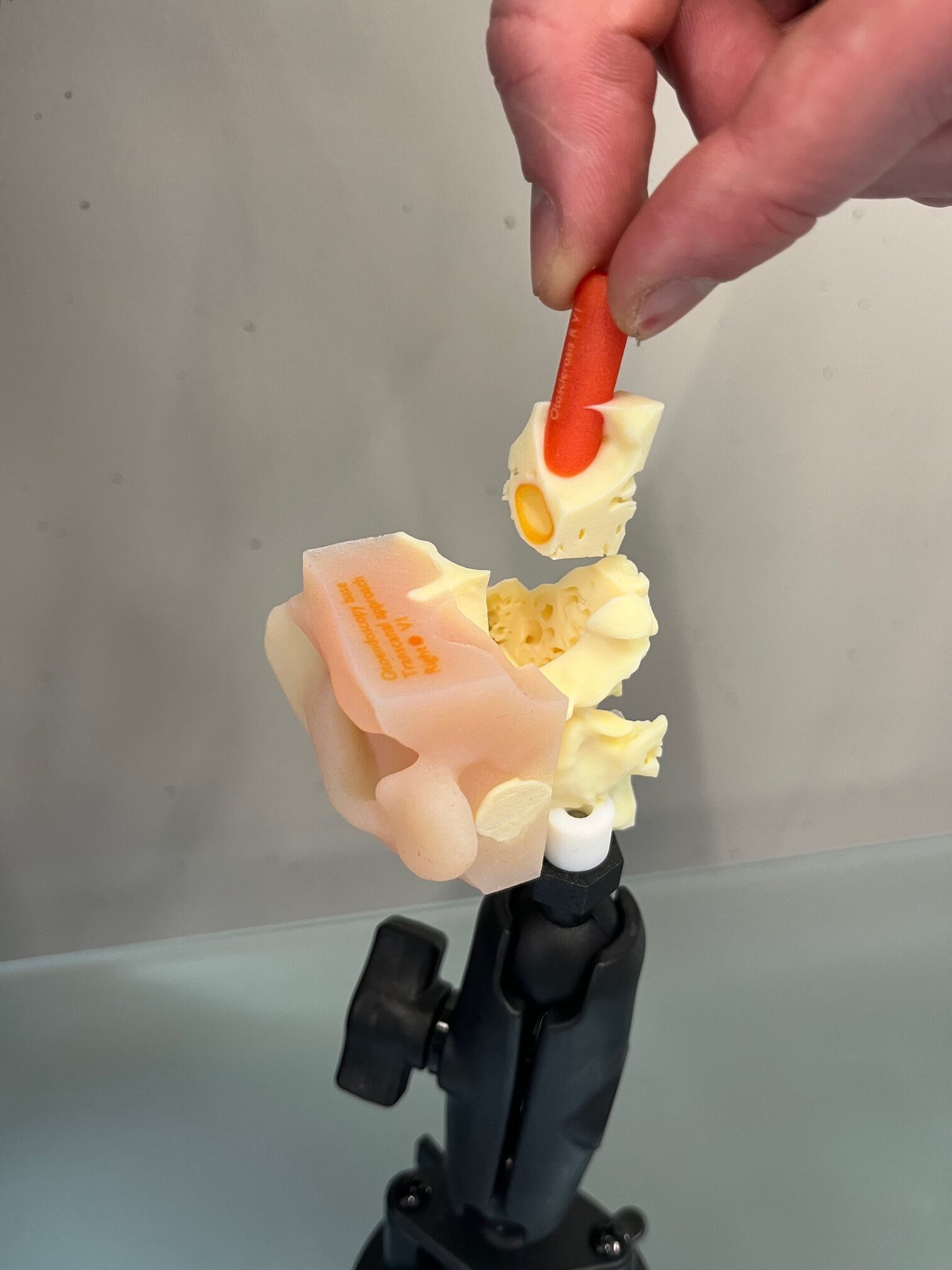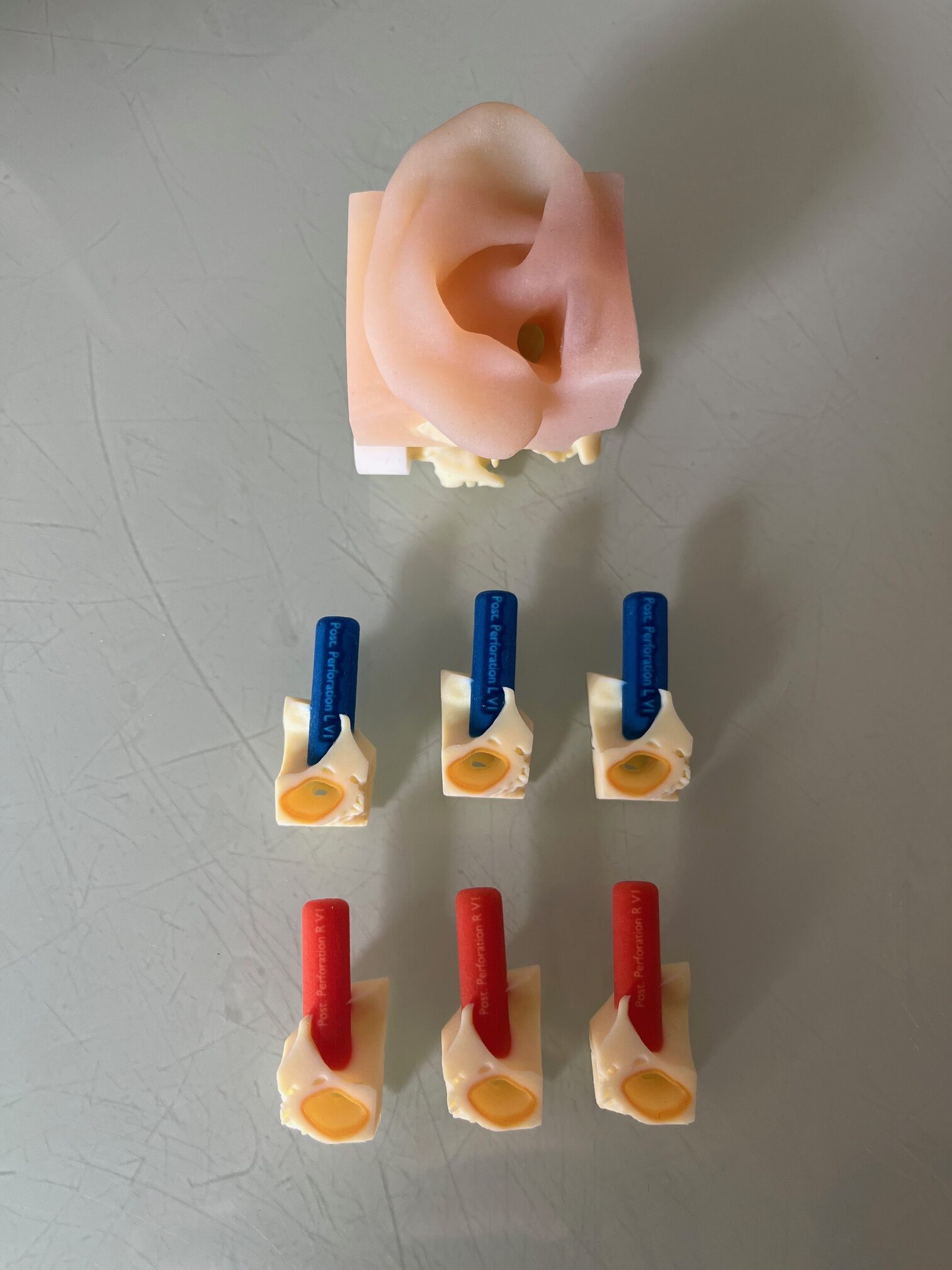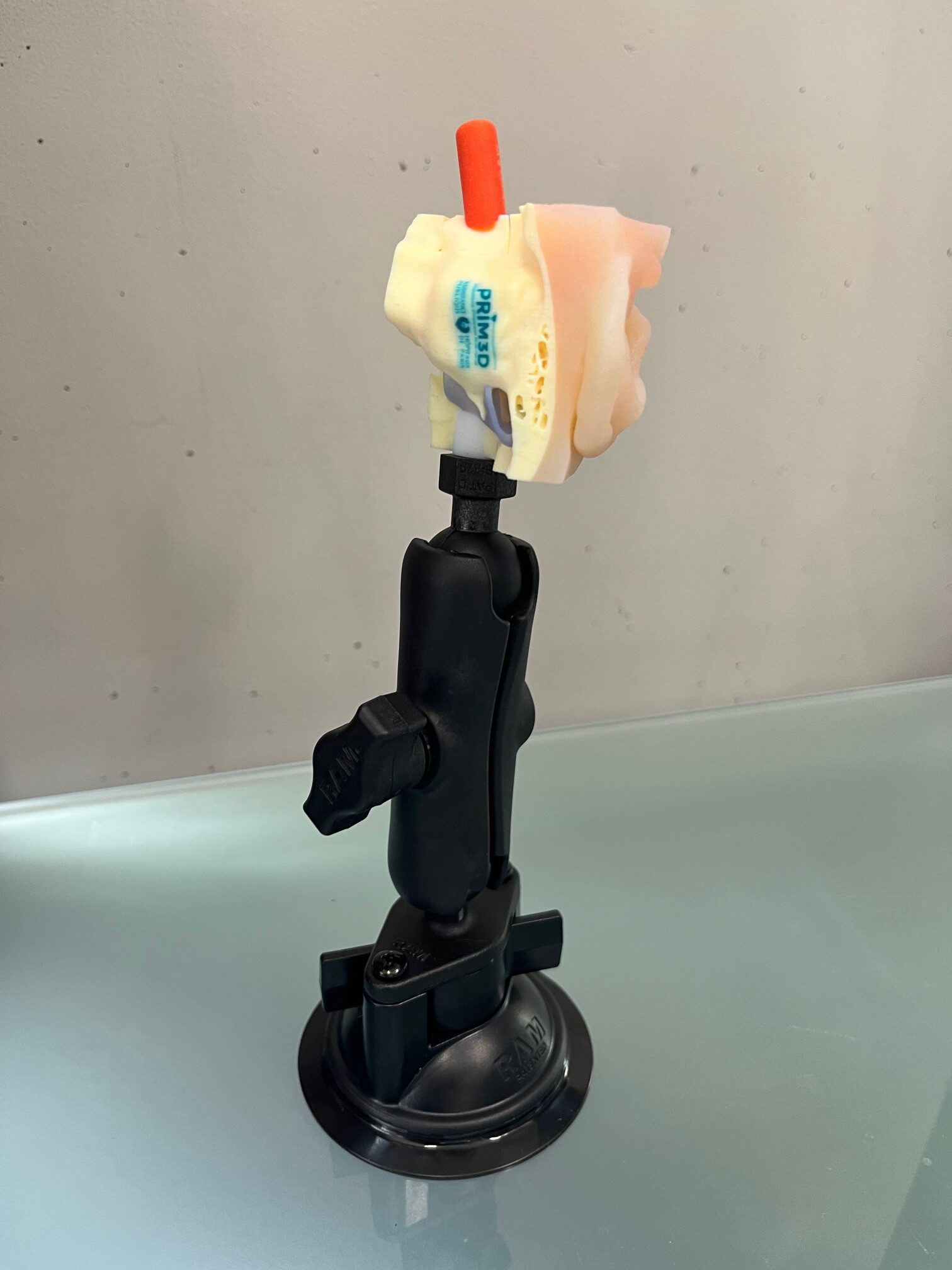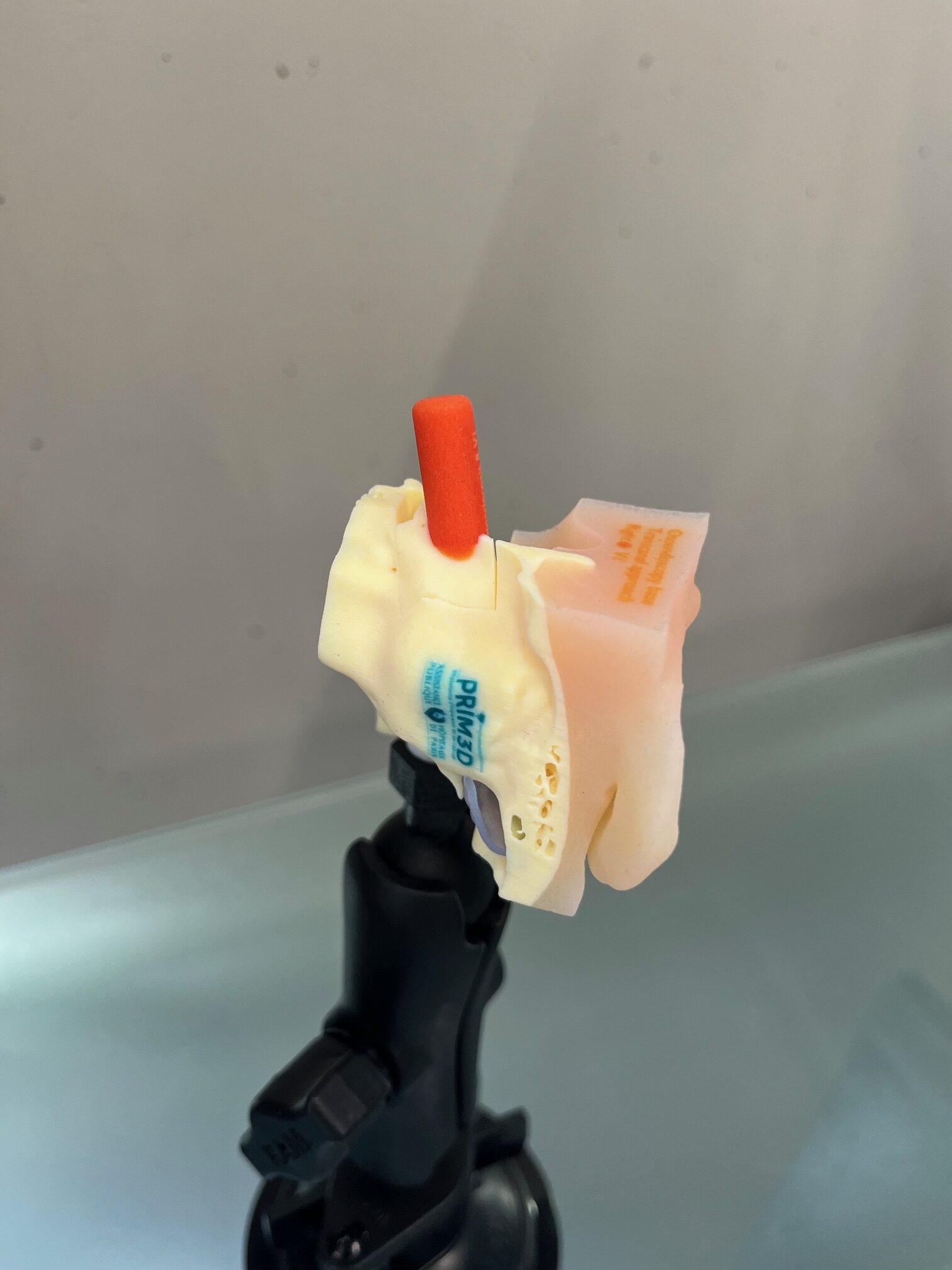The OTOSURG simulator is a simulation model for oto-endoscopic surgery. It is designed for training in transcanal tympanic cavity surgery.
Thanks to its disposable cartridges, it can perform a range of surgical procedures :
- Removal of the skin from the ear canal,
- Lifting of the eardrum,
- Separation of the ossicles,
- Exploration of the tympanic cavity,
- Cutting the tympanic cord and ligaments,
- PORP / TORP placement.
The OTOSURG simulator is available in a set consisting of :
- 1 anatomical ear model
- 1 articulated arm
- 1 set of disposable cartridges to choose from various pathologies
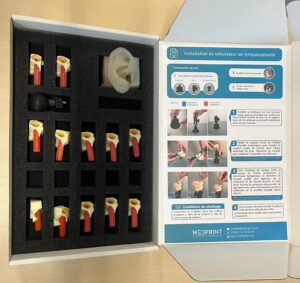
Type of cartridges available* :
- Normal tympanic case (no pathology cartridge)
- Tympanic perforations (possibility to customise the type of perforation – contact us)
- Posterior perforation
- Anterior perforation
- Otosclerosis
- Otosclerosis (normal case with fixed stapes)
- Otosclerosis after stapedectomy (stapes and plate missing, thin membrane under the oval window)
- Ossiculoplasty
- Normal case, no incus, for PORP placement
- Normal case, no incus, no stapes, mobile plate, for TORP placement
NB : other types of cartridge are under development. Please do not hesitate to contact us for further information.
In addition, we offer :
- fake liquid blood, to make the simulation environment more realistic
- an aponeurosis plate (50 x 50 x 0.3mm, 3D printed)
- a cartilage plate (50 x 50 x 0.9mm, 3D printed)

